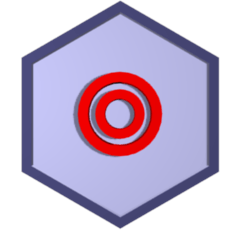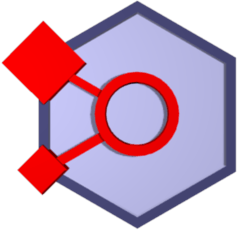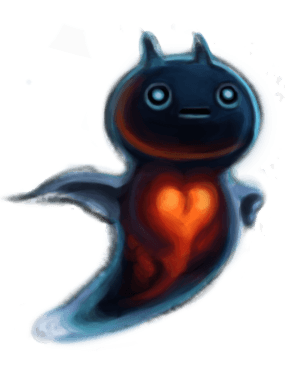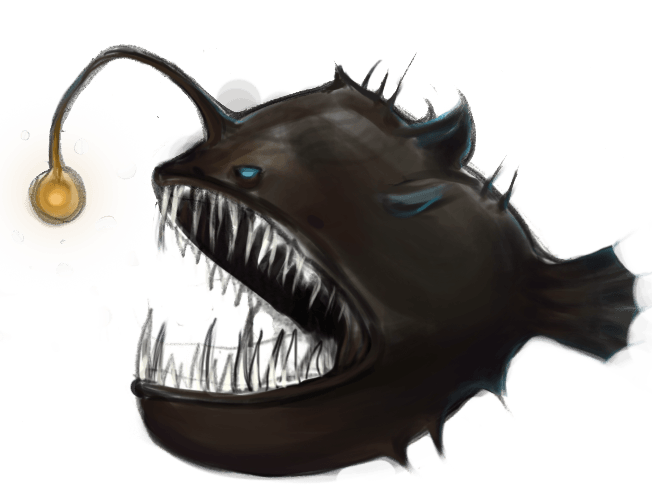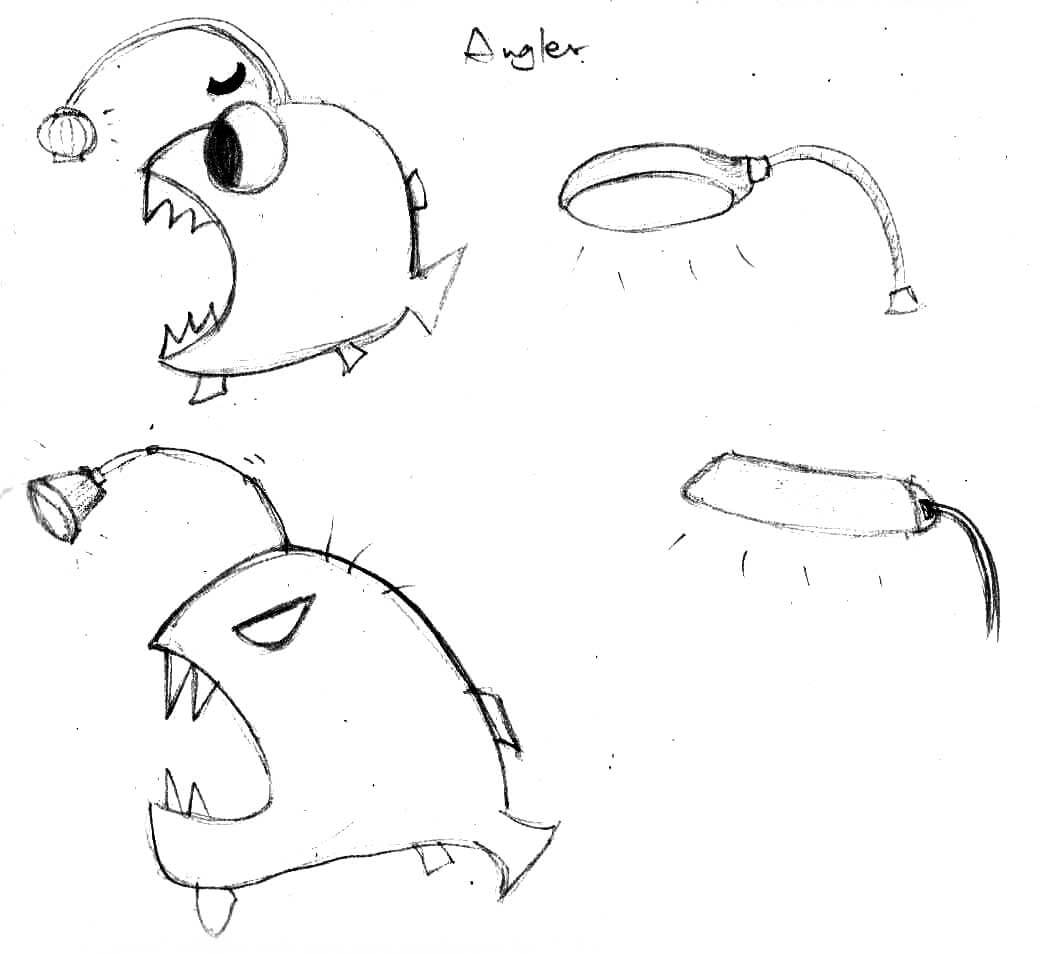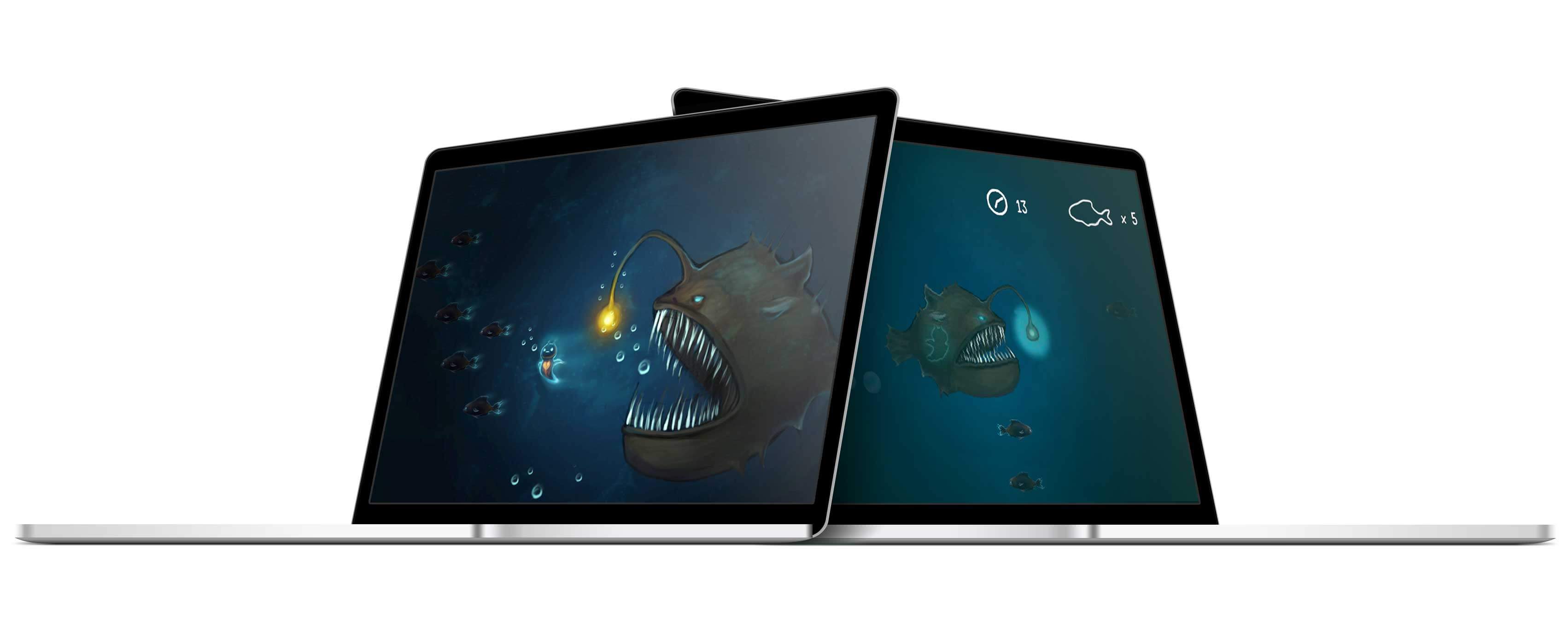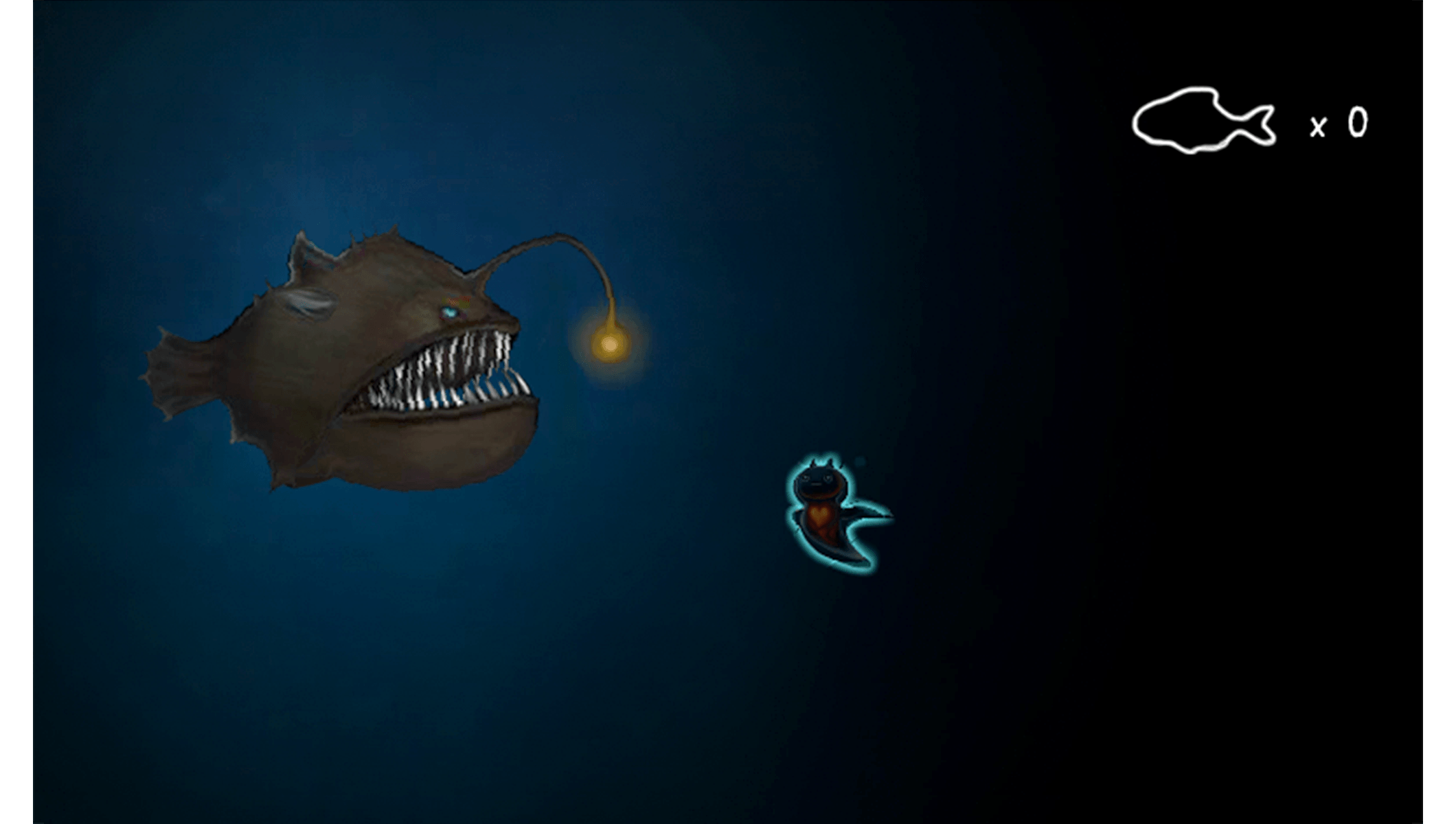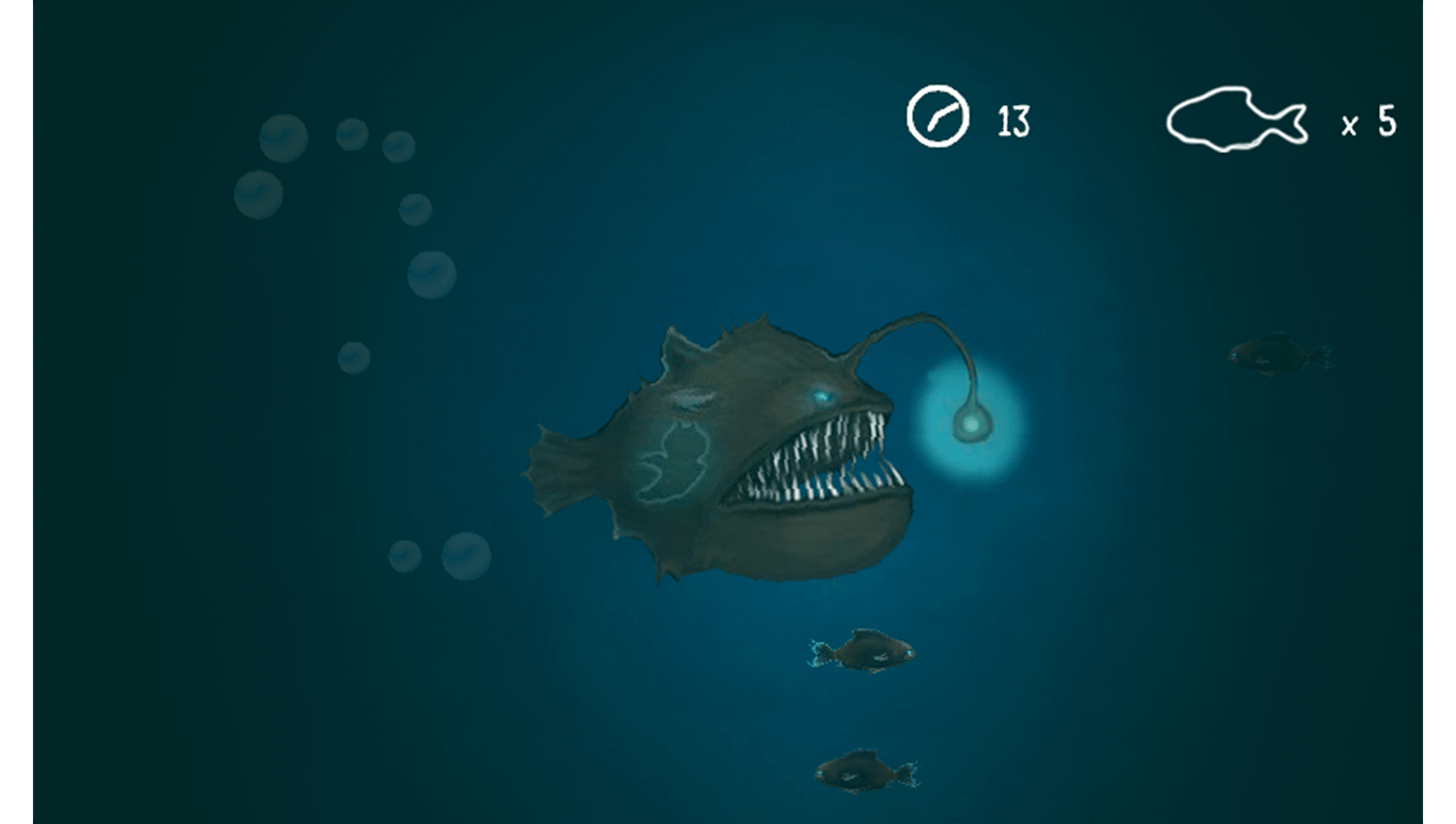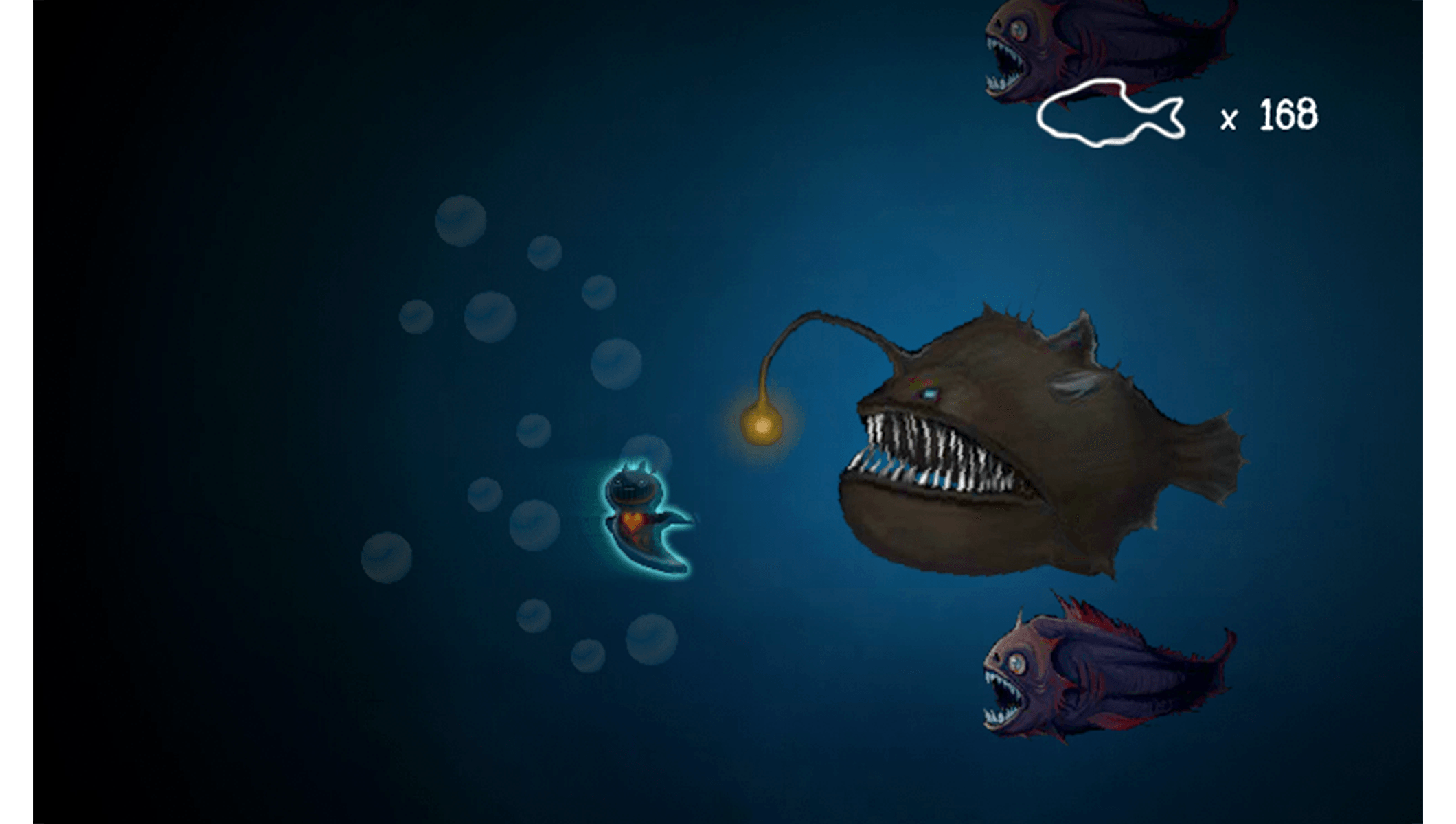PROTOTYPING & SKETCHING
After settling on our concept, we set out to prototype our game and prove out some of the core technology. First, we needed a pixel-perfect hit detection system in order to avoid having players accidentally get eaten by Miguel too often. Second, we needed Merby to be able to swim infinitely through the level. Lastly, we needed a system to manage the amount of fish spawning to keep players in a state of flow. Meanwhile, our artists refined the look and feel of the game.

Core mechanic diagram
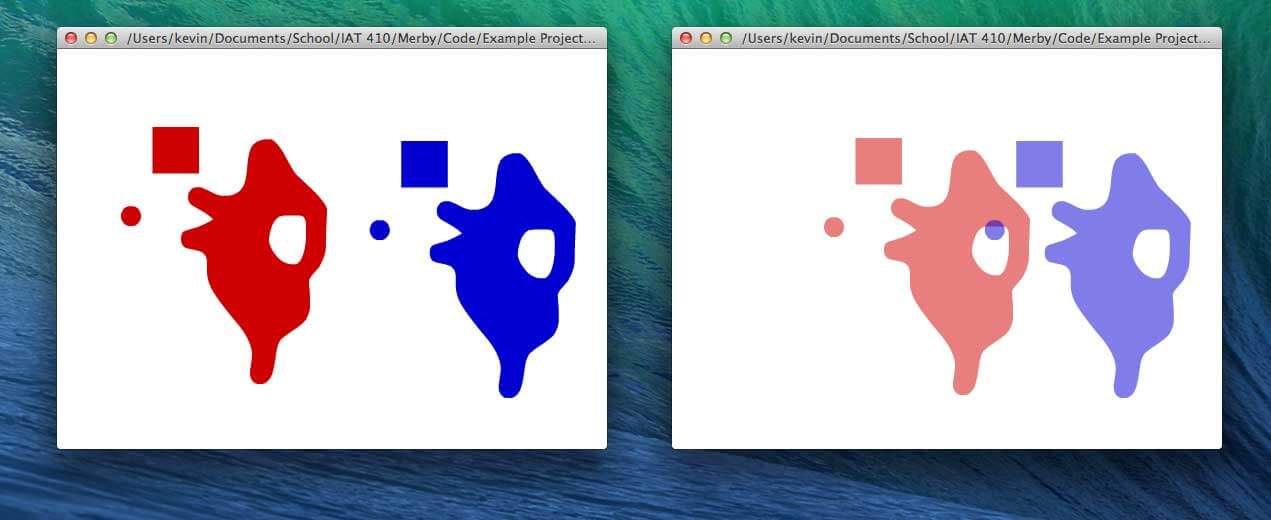
Hit detection test in Flash
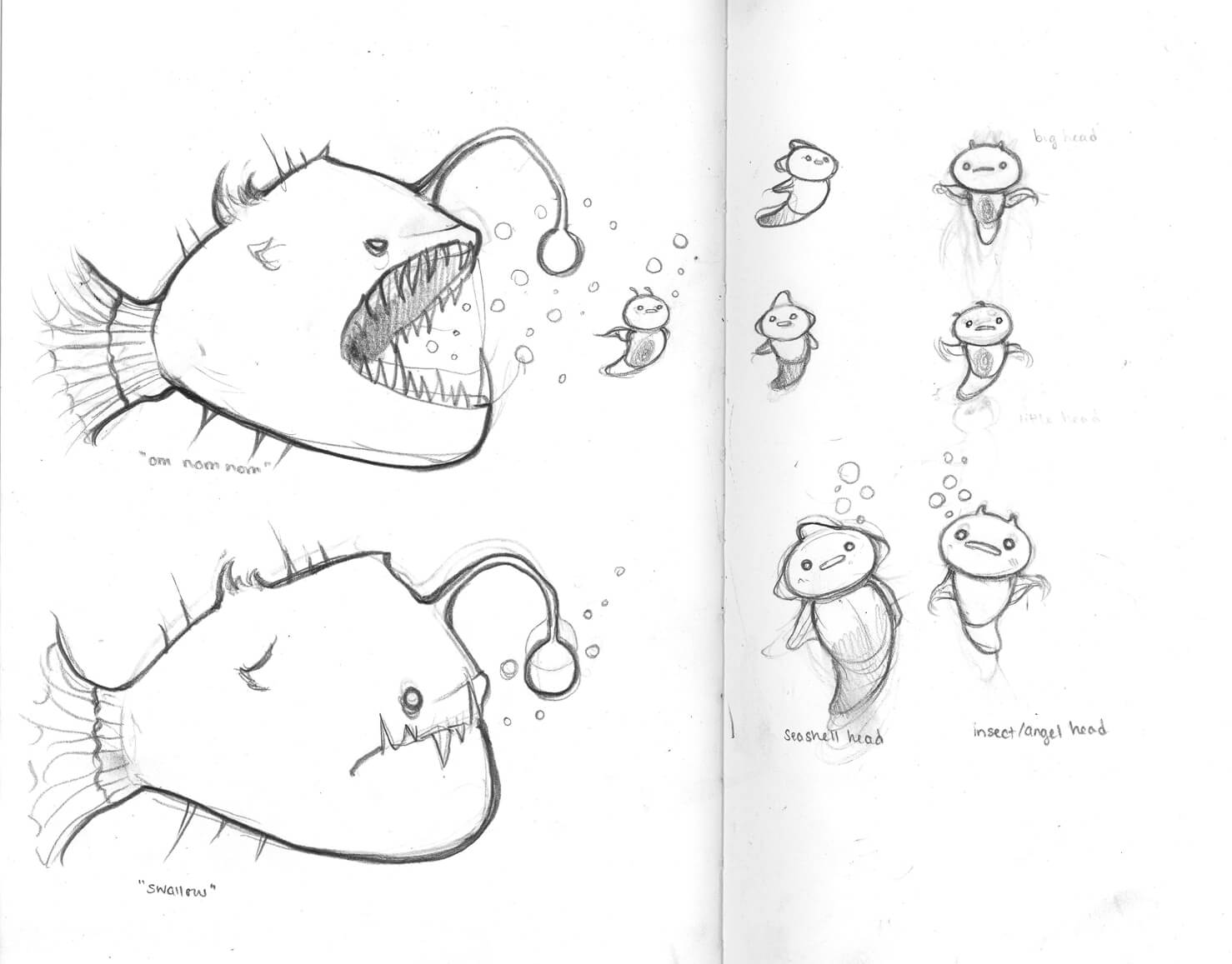
Artist's sketch of characters - Miguel (angler fish, left), Merby (right)
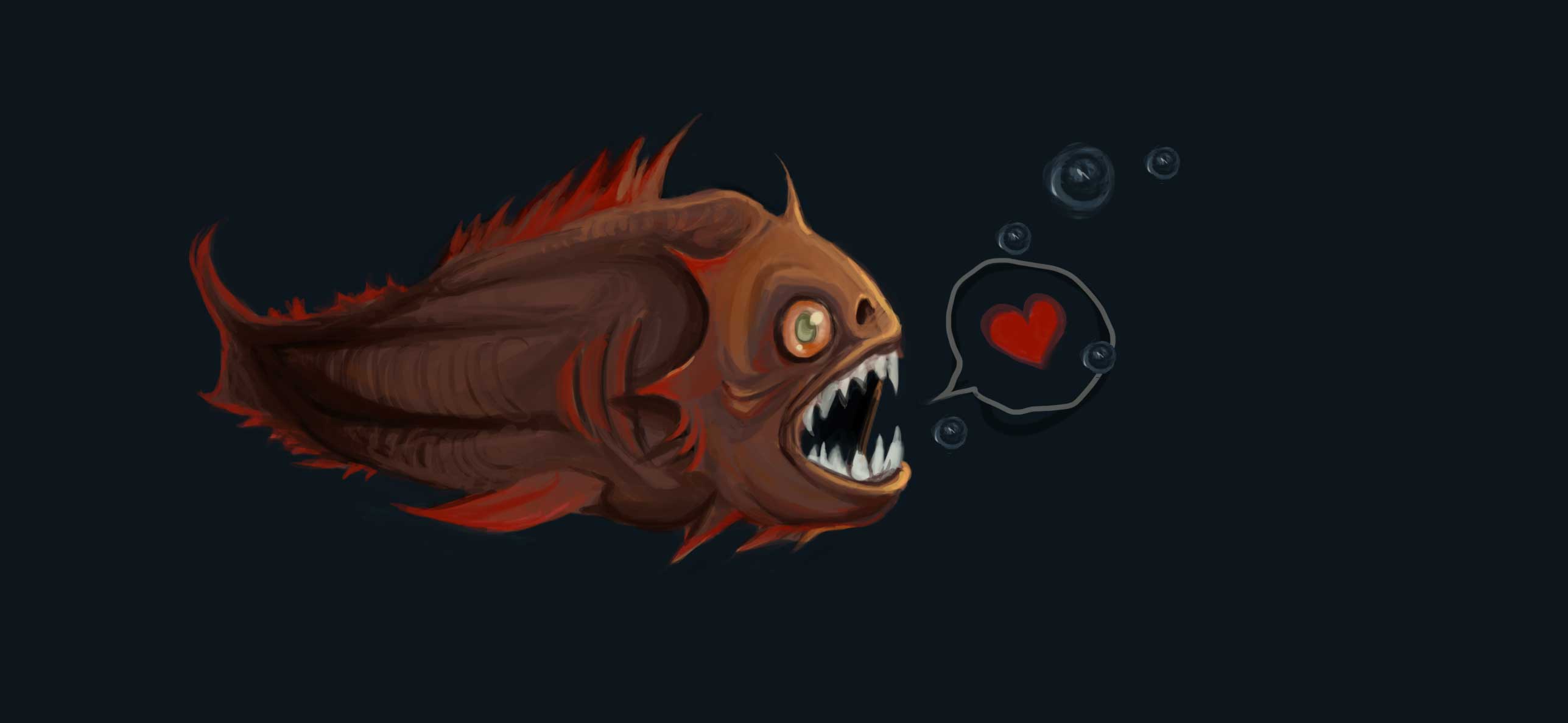
Artist's drawing of enemy type
